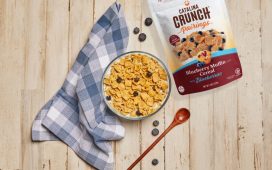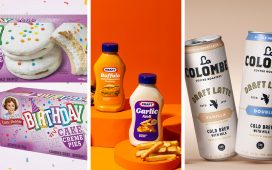KANSAS CITY — The market forecast for products sold in the US featuring cannabidiol (CBD) is remarkable. The Brightfield Group, a market research company, projects US sales will grow from an estimated $4.7 billion in 2020 to $16.8 billion in 2025. Food and beverage manufacturers stand to gain, but for such a growth trajectory to occur several things need to happen.
First, the Food and Drug Administration (FDA) needs to clear a path for the legal sale of food and beverages featuring the ingredient to be sold in the US. The FDA does not currently recognize CBD as a food or beverage ingredient nor as a dietary supplement. But the agency is not stopping its use and some manufacturers are taking their chances. In the US, as of Dec. 2018, hemp-derived cannabis ingredients with less than 0.3% on a dry weight basis of THC may be sold in commercial consumer products such as tinctures or extracts. It’s a confusing situation that has left risk-averse food and beverage manufacturers on the outside looking in.
“The environment is actually not clear as to where we are and where we should be with CBD,” said Hilton H. Schlosberg, president, chief operating officer and chief financial officer of the Monster Beverage Corp., Corona, Calif, during an Aug. 5 conference call to discuss second quarter financial results. “So, at this time, we have products in development, but we – it’s something that we’re looking at from the sidelines. And if things clear up and there are opportunities that will present themselves, it’s something that we definitely will look at going forward, but not right now.”
Second, the supply chain needs to add scale and achieve better controls. A preliminary study by the FDA earlier this year found many products containing CBD to be mislabeled, containing either significantly more or less CBD than advertised.
“With the continued rapid evolution of the marketplace, there is a strong need for consumer and developer education,” said Keith Woelfel, director of research and development for Caliper Foods, Commerce City, Colo., a supplier of CBD ingredients and finished products. “People are asking the right questions, but it’s still very difficult to separate the confident from the correct. For now, buyers must continue to beware.”
Mr. Woelfel emphasized the “devil is in the details” with the CBD supply chain, particularly around quality and food safety metrics.
“Since the industry is still developing standards guidelines, required COA (certificate of analysis) info on hemp distillates and CBD isolates is yet to be harmonized or standardized,” he said. “For COAs, pay close attention to pesticides, residual solvents, cannabinoid profile, microbiological, and heavy metals analyses.
“Look for a supplier who can provide you consistent data that is comprehensive and has high standards for the minimum limit of quantification for critical components, such as lead and other heavy metals. We have seen COAs that leave out critical info around residual solvents, which begs the question of why this info was left off the COA. Unfortunately, your best bet in dealing with unknown suppliers is to assume the worst.”
Finally, product developers need to learn to work with the ingredient and develop an understanding of how the market is evolving. While CBD is currently the ingredient in focus, lesser known minor cannabinoids such as CBG, CBC and CBN are being researched, in development and may one day become additional tools in the product developer’s toolbox.
“Looking at all the cannabinoids, CBD is the easiest to harvest,” said Mark Elfenbein, chief revenue officer for Socati, Austin, Texas, and a supplier of CBD ingredients. “It is readily available and affordable, and there are many use cases applicable to pure CBD. But we’re seeing more studies on minor cannabinoids like CBG, CBN and CBC.
“CBG may be used in a morning immunity type of blend and for a cognitive boost. It can be rolled in with other functional ingredients like Vitamin C and Coq10. I would call it a cognitive enhancer.
“On the other side you have CBN, which research has shown is effective for relaxation. It’s more of a nighttime use case. CBN customers may use it before bedtime to help relax them. CBN could be rolled in with valerian root, chamomile and those types of ingredients.”
Mr. Woelfel added, “Recent improvements in the production technology and cost structures of minor cannabinoids such as CBG, CBC and CBN are enabling the incorporation of these cannabinoids into functional foods for a wide array of market applications. These minor cannabinoids offer a range of reported health benefits, but the science is even more nascent there than with CBD. We look at minors and see incredible potential, but far more clinical work is needed to transform that potential into reality.”
Form and function
CBD is a non-psychoactive compound known for its health and wellness properties. Consumption is associated with relaxation, pain relief, improved sleep, positive mood, better memory and stress response.
Mr. Elfenbein said gummy and beverage applications are currently over 90% of the CBD edibles market with gummies the No. 1 deployment application.

Chef Ron Silver, the founder and chief creative officer for Azuca, New York, a manufacturer of CBD edibles, said he sees beverages becoming a more prominent way to consume CBD.
“There’s a lot of room for innovation,” he said. “But it needs to be understood what the dosing is and that the consumer and manufacturer are committed to understanding this is a medicine. Dosing and purity are most important.”
Mr. Elfenbein said Socati regularly receives questions about dosages and that there is a significant range in products on the market.
“A guide we use is we feel if the consumer’s new to CBD a lower starting dose in the 10 mg per dose area is appropriate,” he said. “We see this ranging from 10-30 mgs per dose.
“We do like to know what the end-product is to help customize the flavor profile instead of providing a raw CBD product. There is technology out there like bitter blockers which provide a better taste experience. Once we are aware of the end use, we have a better idea of how to work with the material.”
Mr. Silver emphasized it is not easy to create a finished product that is “graceful” and properly delivers the right dose.
“It requires a lot of moving parts to come together,” he said. “The challenges are sourcing good oil, having good formulations that are easily dosed and understood by the consumer, and making sure the medicine is staying in place.”
Caliper’s primary ingredients are flowable powders and liquid concentrates with standardized, soluble active cannabinoid components, according to Mr. Woelfel.
“Flowable powders are ideal for powdered drink mixes, powder bolt-ons, baking mixes, pet foods and confections,” he said. “Liquid concentrates are ideal for ready to drink (RTD) beverages, wet mixes, gummies, energy gels, energy bars. Ultimately, we’re trying to make CBD and other cannabinoids as easy to integrate into food and beverage systems as any other active ingredient.”
The science and art of formulation
Mr. Silver said there are three key issues he thinks product developers need to focus on to produce successful edibles with CBD – delivery mechanism, emulsification system and the flavor profile.
“The middle one – emulsification – is really the most important problem to tackle,” he said.
Using a gummy application as an example, he said poor emulsification will result in the oil seeping out and ending up on the wrapper rather than being ingested.
“The oil molecule doesn’t like water; it’s hydrophobic … and wants to separate,” he said.
Mr. Woelfel said based on shelf life data with CBD stability in food systems, Caliper has observed that CBD is most stable under high acid conditions, around pH of 4.0.
“More neutral and basic conditions can have a significant effect on reducing CBD potency over shelf life,” he said. “Additionally, thermal processing at higher pH conditions can have a pronounced effect on reducing CBD potency in the finished goods.
“When formulating for RTD beverages to be incorporated into aluminum cans, the quality of the CBD emulsions becomes an additional factor for shelf life. Poor CBD emulsions have been implicated in can liner absorption (also known as ‘scalping’), reducing CBD content in the beverage over shelf life.”
Mr. Silver described the flavor of CBD as ranging between “barnyard to relatively neutral with a slight barnyard aftertaste.” And as product developers raise the amount of CBD in an application the flavor challenges become more significant.
“CBD is very bitter at higher concentrations and can impart a rising bitterness, which is a major challenge in product development,” Mr. Woelfel said. “Rising bitterness hits you on the back end of your tongue and throat and increases post consumption.”
He said the addition of citrus flavors or mint flavors can be effective in reducing perceived CBD bitterness, but there are also several levers to pull at both the ingredient and product level to improve the final result.
“As far as hemp off-notes, those are more prevalent in full- and broad-spectrum type CBD oils,” Mr. Woelfel said. “Formulating with isolates drastically reduces the hempy, green flavors that can be associated with industrial hemp extracts, which alone can make isolates an effective flavor solution for designing products with a cleaner and more consistent flavor profile.”
Color stability can also be an issue in such applications as powders and gels.
“The root cause is mostly likely due to low level oxidation of CBD or CBD-related compounds,” Mr. Woelfel said. “This is all new science though, so formulators should avoid getting overconfident with their development efforts. You’ve got to validate every assumption.”





